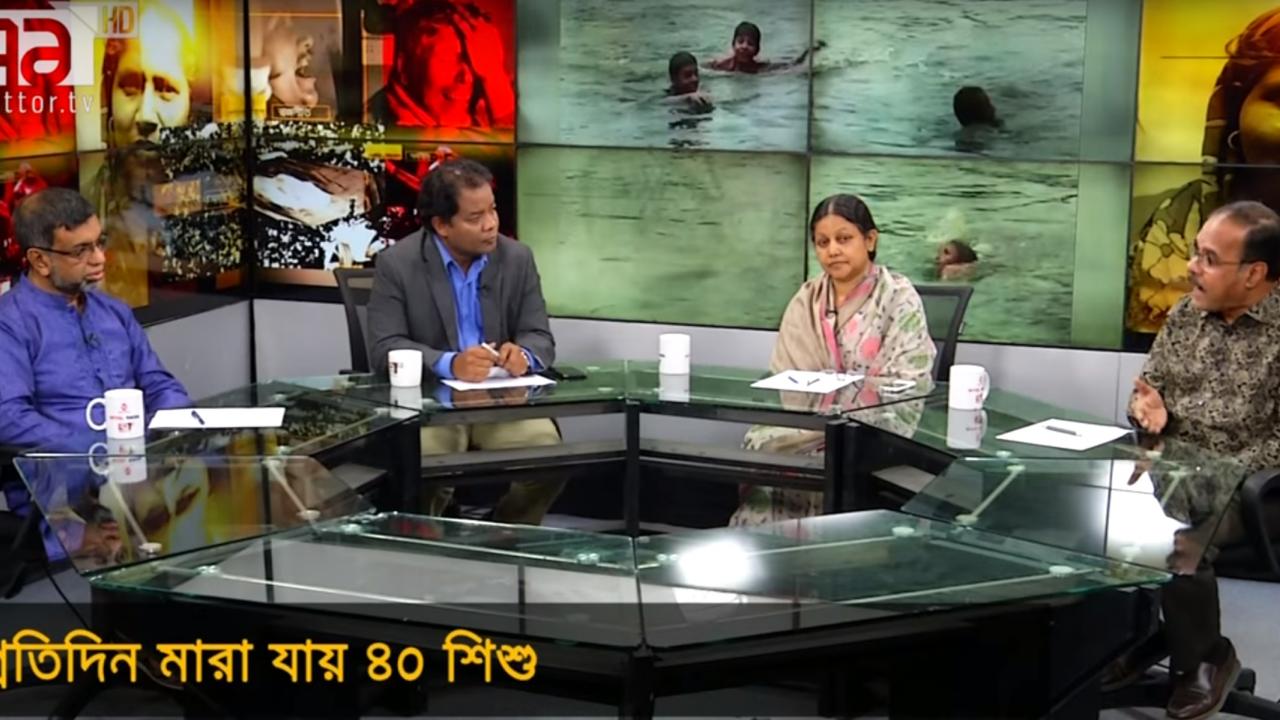
The day after the drowning deaths of two children in Chandpur district, Ekattor TV, a 24-hour news channel in Bangladesh, took a deeper look at child drowning and what can be done to end it.
Program Summary
The show featured Laila Jesmin, Additional Secretary of the Ministry of Women and Children Affairs (MoWCA), Dr. Emdadul Huq of ICDDRB, and Dr. Aminur Rahman of CIPRB. Synergos works ICDDRB and CIPRB in our Drowning Prevention Partnership.
The host Shakil Ahmed opened the program by presenting the horrifying fact that 40 children under five die from drowning each day in Bangladesh, often close to their homes. And he said that our vision should be to have a Bangladesh where children won’t die from drowning anymore.
The speakers shared important data on drowning, such as that fact that 80% of deaths happen within 20 meters from the victim’s home, and that work on drowning is uncoordinated. There is need for more coordination between the Government and other agencies. Awareness of people can reduce it to a great deal.
Anchals (community-based daycare and learning centers) were presented as an effective prevention measure for drowning for children under five. This model, put in place by organizations such as ICDDRB and CIPRB, has been proven to reduce drowning by 80% during the time when mothers are busy with housework and older siblings are at school. Kids learning to swim and adults learning CPR can also save lives.
Important statistics on drowning risks and prevention measures shared by Synergos were displayed on the screen. There was a lot of discussion on the shocking data of drowning and on when and how it surfaced. The speakers stressed on the importance of immediate action as the rate of drowning fatality surpasses any other disease which affect children under five. It should be treated with the same seriousness which helped us conquer other fatal communicable and non-communicable diseases earlier during the previous decade.
The presenter asked about the roles and responsibilities of different ministries in preventing child drowning. How does the government plan to address this coordination? The Additional Secretary candidly explained that the Government, especially MoWCA was not fully aware of the severity of the problem. She was not aware if the government was presented with the research report published by CIPRB. Currently, it is not a priority agenda for the Government, but if the Government is made to realize how severe the matter is, it will obviously address the problem.
Child drowning is a cross-cutting issue though she has come to realize that that the Health Ministry is already involved with the matter. She stressed that the role of Health Ministry is relevant when the drowning death already occurs but the protection of children is MoWCA’s prime and continuous concern. MoWCA has already approved an Early Childhood Development Policy which addresses the protection and safety concerns of children. MoWCA has also submitted a proposal on early childhood development to the Planning Commission which includes swimming lessons as a part of curriculum for children in areas that have many bodies of water bodies.
Furthermore, social awareness of families and mothers are very important - the media can play an important role in creating public awareness.
The Additional Secretary ended by saying “If I didn’t come here today I wouldn’t have known the shocking statistics.”